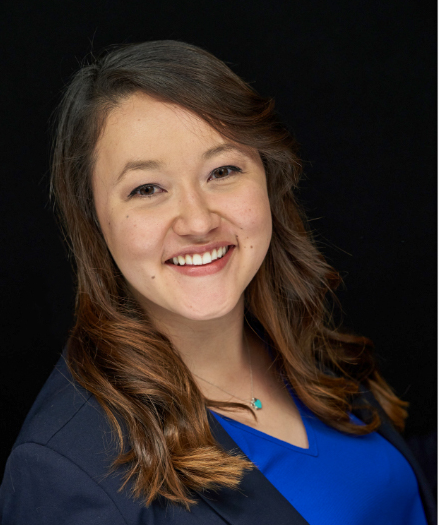4 Ways to Ensure That Your DE&I Efforts Resonate With Employees
By Emi Kamezaki
April 2022
Employee communications and diversity, equity and inclusion (DE&I) have always been essential in building strong organizations, but with the rise of social justice movements, remote work and an increasingly purpose-driven population, companies are increasingly acknowledging them as critical business imperatives.
The murder of George Floyd in May 2020 reignited and accelerated the Black Lives Matter movement in the United States, spurring an unprecedented reaction from corporate America. This tragedy kick-started numerous organizations on their journey to become champions of societal change. Over the past two years, responses have ranged from posting black squares on social media to full-fledged corporate activism.
Now, DE&I is top of mind, and many are scrambling to implement their own programs. Some have been celebrated for making meaningful progress while others have been “canceled,” or publicly called out, leaving executives nervous or unsure where to begin.
Bringing employees along on an organization’s DE&I journey requires collaboration between several internal stakeholders beyond the communications team, such as human resources, finance, leadership and others. Ideally, each piece will work in harmony to create a seamless employee experience.
While there isn’t a comprehensive solution or a perfect DE&I program, these four principles will help ensure that communications and employee engagement efforts are authentic and resonate with individuals from all backgrounds.
1. Start with a shared understanding of diversity, equity and inclusion.
There are many misconceptions about what DE&I means, and therefore, differing opinions on what success looks like. DE&I isn’t a marketing campaign or a cultural observance month — it’s a long-term commitment to doing better. Diversity is often positioned as a matter of race, but it’s far more complex than skin color.
Companies should be working toward empowering people of every culture, age, socioeconomic status, disability, gender identity, sexual orientation, ethnicity, religion and more. They should treat every person equitably, in terms of pay, opportunity and respect. When diversity and equity are prioritized, a culture of inclusion will naturally follow.
As always, word choice is equally significant, as it sends a message about what’s most important to the organization. The variations of DE&I have distinct nuances — some organizations refer to their programs as Inclusion and Diversity efforts, excluding the issue of equity, while others are branded as Justice, Equity, Diversity and Inclusion, leaning into social justice issues as key messaging pillars. Regardless of where an organization falls on this spectrum, having consensus around the purpose of the program will help maintain focus.
2. Ground the approach in research and measurement.
Most DE&I efforts that feel inauthentic are reactive in nature — in other words, organizations are responding to a situation, rather than proactively developing a point-of-view or strategy.
While there are certainly cases in which reactivity is necessary, the most successful DE&I programs are grounded in research, executed with intentionality, and embraced as a continuous journey. Begin with an audit of existing efforts, gathering insights about every stage of the employee experience, from hiring to retiring.
Starting with a snapshot of an organization’s current state will clarify the most critical priorities and help track progress. When planning a DEI program, important metrics include, but are not limited to:
- Opportunity: a diverse slate of candidates for recruiting; equal opportunity for promotions, stretch projects and compensation increases
- Experience: pay equity and transparency; respectful corporate culture and workplace experience
- Representation: diversity of leadership team and management; diversity of employees, suppliers, etc.
- Accountability: measurable goals; processes to limit bias; policies to outline and reinforce desired behaviors
3. Build trust to create space for feedback.
Corporate DE&I programs should be designed to improve the employee experience, and creating space for two-way communication is essential in measuring and maximizing their impact. First, build a foundation of trust by equipping your leaders and mid-level managers with the tools they need to communicate inclusively. Empower them to be transparent wherever possible and encourage continuous learning through training opportunities.
Then, make sure that employees can voice opinions through regular surveys or focus groups, conversations with ERGs or even the classic suggestion box. Finally, follow through on any commitments to maintain that trust.
For example, if an organization claims to support employees with disabilities, it should back up its statement by providing an accessible application process and equitable pay for employees with disabilities. Taking the time to listen and elevate employees’ voices will add authenticity and resonance to DE&I efforts.
4. Center the experiences of systemically marginalized communities.
Progress in DE&I requires some discomfort, as it involves challenging long-standing systems and reflecting on an organization or team’s shortcomings. This discomfort is a necessary growing pain that shouldn’t hinder improvement. In other words, despite these complex feelings, the conversation must remain centered on the experiences of systemically marginalized communities.
Systemically marginalized communities include those who have been denied equitable access or opportunity, and those who have faced institutional discrimination. This could describe people who identify as LGBTQIA+, Black, Indigenous or People of Color (BIPOC), people with disabilities, people from various ethnic, religious and economic backgrounds, and others, according to Emory University’s Office of Diversity, Equity and Inclusion.
A 2021 Gallup web survey polled over 8,000 respondents, asking if they felt discriminated against at work in the previous 12 months. The data showed that 24% of both Black and Hispanic employees reported experiences of discrimination at work, compared to 15% of white employees. Again, DE&I isn’t specific to race, but this statistic underscores the need to prioritize and center the perspectives of those who continue to experience the brunt of inequity.
Ultimately, after countless empty promises and performative motions, employees want to feel psychologically safe, respected and heard. They’re hoping for DE&I efforts from their companies that are built for long-term change.
DE&I will never be an exact science, but alignment, research, ongoing feedback and focused objectives will contribute to an approach that truly impacts employees.



